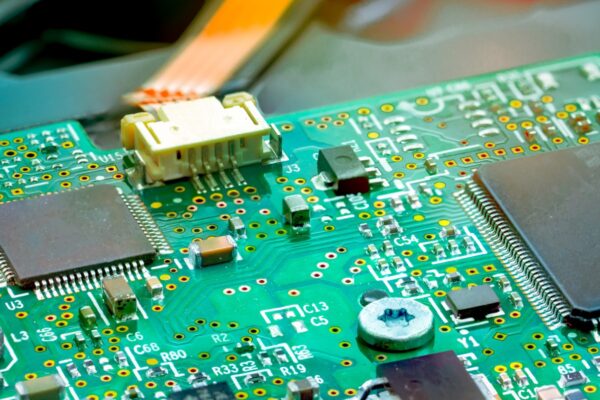What is Boundary Scan
Boundary scan, also known as JTAG (Joint Test Action Group), is a test technique that involves the integration of shift register latch cells, known as boundary scan cells, into each external connection of boundary scan compatible devices. These cells allow for the testing and debugging of integrated circuits (ICs) and interconnects on a PCB.
The boundary scan cells are strategically placed adjacent to each I/O (Input/Output) pin of an IC, forming a shift register chain that enables the transfer of data between devices. During normal operation, the boundary scan cells remain invisible and have no effect on the circuit. However, when the device is set to test mode, a serial data stream, called a test vector, can be passed through the shift register chain. This allows for the capture of data from integrated circuit lines or the forcing of data onto them, facilitating comprehensive testing and analysis.
To control the boundary scan device, a dedicated Test Access Port (TAP) and TAP Controller are utilized. The TAP Controller, a 16-state machine, manages the Boundary Register, which consists of the boundary scan cells. The TAP signals, including Test Data In (TDI), Test Data Out (TDO), Test Clock (TCK), Test Mode Select (TMS), and optional Test Reset (TRST), are used to control the boundary scan device and perform various test functions.
The IEEE 1149.1 standard defines the architecture and procedures for boundary scan testing. It specifies three mandatory test functions: EXTEST, SAMPLE/PRELOAD, and BYPASS. Additionally, the standard describes optional test functions such as INTEST, RUNBIST, IDCODE, CLAMP, HIGHZ, and USERCODE. Manufacturers also have the flexibility to add their own test functions within the guidelines of the IEEE standard.
Boundary Scan, with its ability to test and debug complex ICs and interconnects without the need for physical test probes, is a valuable technique in the PCB industry. It provides a comprehensive testing solution, particularly in cases where physical access to pins is challenging due to factors like high component densities, smaller footprints, and advanced technologies such as BGA and SMT.
Frequently Asked Questions
What Is the Difference Between JTAG and Boundary Scan
Boundary scan is a test technology that involves adding extra cells in the leads from the silicon to the external pins. This allows for the verification of both the chip and the board’s functionality. On the other hand, JTAG is an acronym for Joint Test Action Group, which refers to the interface or test access port used for communication purposes.
What Is the Purpose of the Boundary Scan Register
The boundary scan register serves the purpose of capturing data in the boundary scan cells, which involves monitoring the input pins. This data can be scanned out of the device through the TDO pin for verification, and it can also be scanned into the device through the TDI pin. By doing so, the tester is able to verify the data on the output pins of the device.
What Is JTAG in PCB
JTAG, which stands for Joint Test Action Group, is an industry standard used for verifying designs and testing printed circuit boards after they have been manufactured. It is a tool that complements digital simulation and implements standards for on-chip instrumentation in electronic design automation (EDA).
What Is Boundary Data
Boundary data refers to a set of test data values located at the extremes of a given range. These values represent the upper and lower limits of what is expected and should be accepted. Conversely, any values that fall outside of these limits, either before or beyond them, should be rejected.
How Does JTAG Work
The JTAG/boundary-scan test architecture was initially designed to test the connections between integrated circuits (ICs) on a printed circuit board (PCB) without the need for physical test probes. This is achieved by attaching boundary-scan cells, which are created using multiplexer and latch circuits, to each pin on the device.
What Is the Benefit of JTAG
Using JTAG for firmware extraction offers numerous benefits. Firstly, JTAG is a universally recognized and extensively utilized protocol, which means there is a wide range of tools and resources accessible for its utilization. Secondly, JTAG enables direct access to the device’s memory, bypassing the need for any software or firmware functionality.
What Is the Difference Between JTAG and ISO
The ISO versions are essentially the same as the RGH/JTAG versions, but they are in a different format. ISO files contain the game files, while RGH/JTAG versions are in a different format. Yesterday, Noobert was experimenting with compressing the files into a smaller format.
What Is Boundary Scan Architecture
A boundary scan architecture is a standardized testing method that defines the techniques and structure for addressing hardware problems in components like printed circuit boards (PCBs) and integrated circuits. This approach is particularly useful for testing intricate and densely packed PCBs, as traditional in-circuit testers may not be as effective in these cases.
What Is JTAG Tap Controller
The JTAG TAP Controller, according to the IEEE-1149.1 standard, is a 16-state finite state machine that is controlled by the test clock (TCK) and test mode select (TMS) signals. The transitions of the TAP controller are determined by the state of TMS on the rising edge of TCK.
What Protocol Does JTAG Use
The JTAG protocol, also known as IEEE 1149.1, was initially developed to streamline the testing of PCB interconnectivity during the manufacturing process.
Is JTAG a Hardware or Software
JTAG is a hardware interface that was created by the Joint Test Access Group in the 1980s to overcome the technical difficulties and restrictions of testing interconnects on the more intricate and compact printed circuit boards (PCBs).





